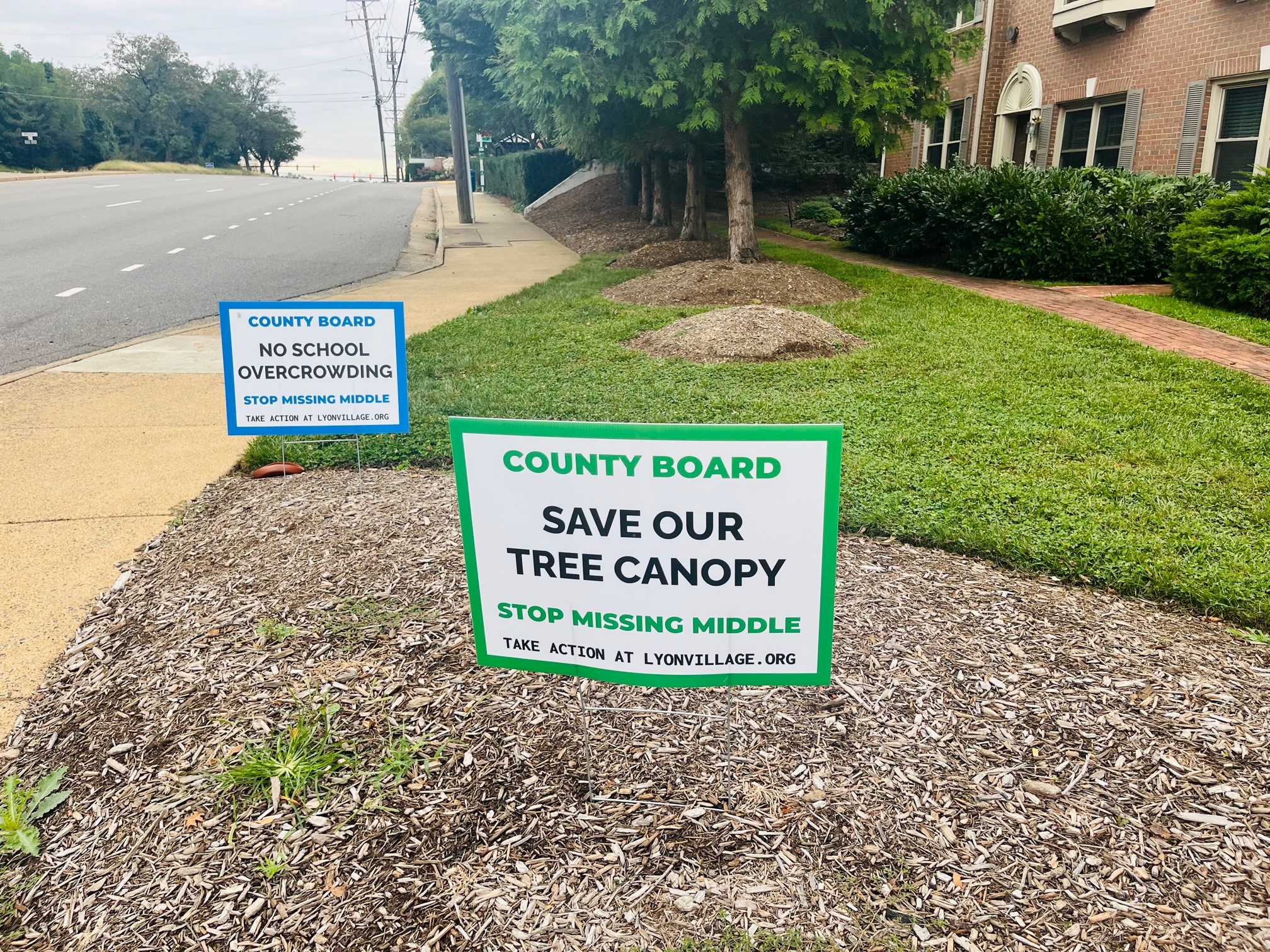
After extensive analysis, public testimony, and Board deliberation, the Arlington County Board unanimously voted Wednesday evening to approve a series of amendments to the Arlington County Zoning Ordinance and General Land Use Plan (“GLUP”).
These “Expanded Housing Option” (“EHO”) amendments came as a result of the multiyear Missing Middle Housing Study. The EHO amendments allow for by-right development of townhomes and other attached housing types in areas of the County currently zoned only for single-family detached housing.
The Board approved 12 amendments to the Zoning Ordinance, affecting the R-5 through R-20 zoning districts. These amendments will take effect on July 1, 2023. The staff report, which summarizes the changes and includes the specific Zoning Ordinance amendment language, may be found here.
The Board also adopted a series of “options,” which are summarized below:
• Option 1A (Number of Units): Allows for EHO development to extend up to six attached units.
• Option 2D (Site Area/Height): Requires a minimum site and lot area in the applicable R zoning district, but limits development on lots less than 7,000 square feet to four units or fewer. EHO developments will be subject to the setback, height, and other standards applicable within the underlying zoning district.
• Option 4B (Lot Coverage): Single-family detached homes are eligible for a five percent increase in lot coverage in order to add a garage. Option 4B allows the reallocation of this five percent increase into the footprint of an EHO unit. EHO developments, therefore, have a slightly higher maximum lot coverage but are not eligible for an increase in floor area in order to add a garage.
• Options 5C and 5E (Parking): Reflecting the County’s desire to reduce automobile traffic, EHO developments will be required to provide 0.5 parking spaces per unit on sites located within three-quarters of a mile of a Metrorail station, and this requirement is eliminated on any site in which providing parking spaces for EHO units would eliminate an equal number of on-street parking spaces due to curb cuts.
• Option 6A (Tree Canopy): EHO developments with two-to-four dwelling units are required to provide four trees, and developments with five-to-six units are required to provide eight trees.
• Option 7C (Limitation Cap): Limits EHO developments to 58 developments per year for the first five years (until 2028), with such a cap allocated according to the zoning district. Sixty-six percent of the permits will be allotted to the R-6 zoning district; another 9 percent to the R-5 zoning district; and the balance of 25 percent to the R-8, R-10, and R-20 zoning districts.
• Option 8A (SFU Conversion): Single-family homes may be converted into a multi-unit EHO development as a matter of right. This option comes largely in response to enable seniors who wish to “age in place” through downsizing by converting their home into an EHO development, rather than relocating to another neighborhood.
• Option 9B (Definitions): Makes a minor definition change for a duplex.
• Option 10A (Special Planning Areas): Prohibits EHOs within special planning districts/areas identified on the GLUP, which often have more specific guidance through their respective planning document. This limits the number of otherwise eligible properties, primarily located within Columbia Pike and Cherrydale Special Revitalization Districts.
• Option 11 Hybrid (Maximum GFA): Establishes the maximum gross floor area for an EHO development based upon the style of housing and number of units, with the lowest maximum density assigned to duplexes and the highest maximum density allotted to five- and six-plexes.
• Option 12B (Accessory Dwelling Units): Prohibits accessory dwellings in areas eligible for EHO.
Additional amendments to the Zoning Ordinance may be forthcoming.
The Board simultaneously approved an amendment to the GLUP that adds language to Section 5.4 emphasizing the need for increased housing supply, adds language to the GLUP map to include accessory dwelling units, and EHO uses in areas planned for “Low” Residential uses.
With these changes, Arlington joins a handful of other jurisdictions across the country which have sought to broaden the types of permitted residential arrangements in zoning districts which solely permit single-family homes.






